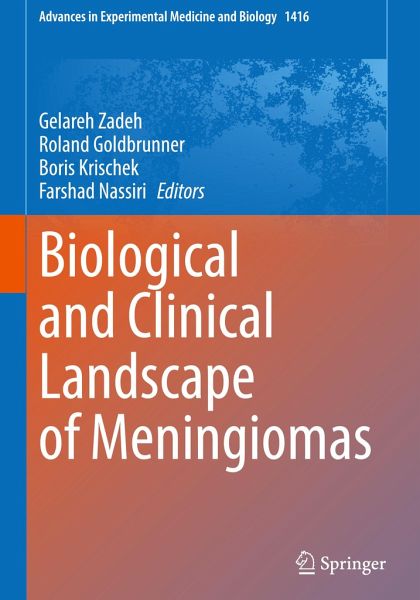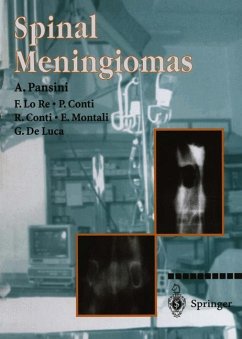
Biological and Clinical Landscape of Meningiomas

PAYBACK Punkte
57 °P sammeln!
"Meningiomas are tumors that originate from the arachnoidal cap cells of the leptomeninges. With an incidence rate of 8.36 per 100, 000 population, they are the most common primary central nervous system (CNS) tumors, accounting for a third of all cases. The World Health Organization (WHO) classification has traditionally categorized meningiomas into 15 different histopathological subtypes and three clinical grades. Tumors are classified as WHO grades 1, 2 or 3 based largely on histopathological features such as mitotic activity, presence of brain invasion, and other atypical features. However...
"Meningiomas are tumors that originate from the arachnoidal cap cells of the leptomeninges. With an incidence rate of 8.36 per 100, 000 population, they are the most common primary central nervous system (CNS) tumors, accounting for a third of all cases. The World Health Organization (WHO) classification has traditionally categorized meningiomas into 15 different histopathological subtypes and three clinical grades. Tumors are classified as WHO grades 1, 2 or 3 based largely on histopathological features such as mitotic activity, presence of brain invasion, and other atypical features. However, there is increasing recognition of the limitations of histopathology including but not limited to: confounding factors such as sampling bias in a heterogeneous tumor, and technical factors related to the experience of the grading pathologist. Even with careful histologic grading, there remains significant variability in recurrence rates within each tumor grade. As more studies have uncovered the molecular features of meningiomas, novel biological alterations have helped refine classification schemes that more accurately reflect patient outcomes. This book reviews the current state of knowledge on the genomic and epigenomic landscape of meningiomas in order to identify the roles of genomic aberrations on diagnosis, prognosis, and treatment of meningiomas in addition to mainstays of surgical management, radiation therapy, and potential novel chemotherapies. Written by a team of world-renowned experts in neurosurgery, neuropathology, radiology, and radiation-oncology, this book is the definitive resource on meningioma management and investigation for both clinicians and scientists alike."














